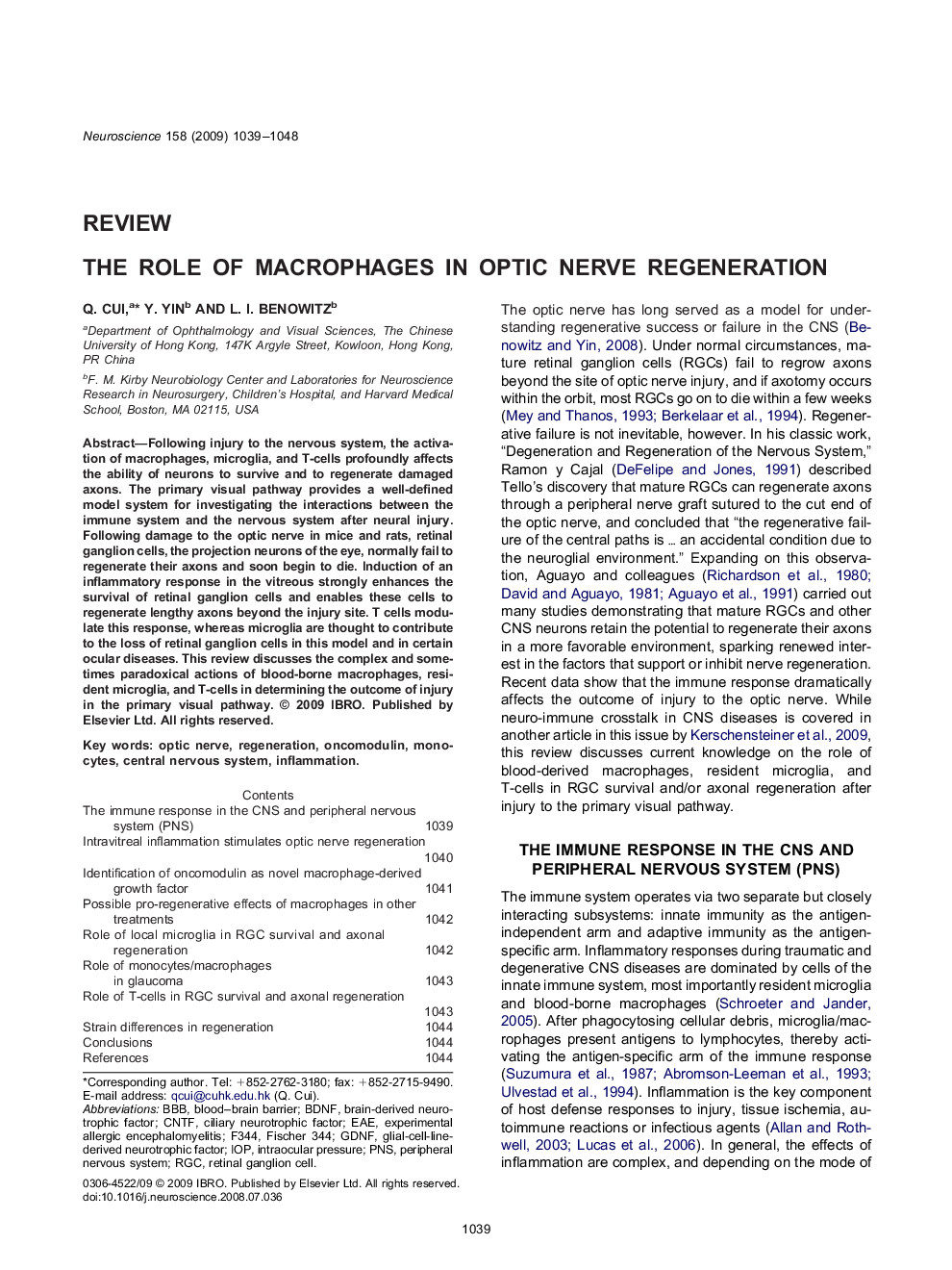| Article ID | Journal | Published Year | Pages | File Type |
|---|---|---|---|---|
| 4340192 | Neuroscience | 2009 | 10 Pages |
Following injury to the nervous system, the activation of macrophages, microglia, and T-cells profoundly affects the ability of neurons to survive and to regenerate damaged axons. The primary visual pathway provides a well-defined model system for investigating the interactions between the immune system and the nervous system after neural injury. Following damage to the optic nerve in mice and rats, retinal ganglion cells, the projection neurons of the eye, normally fail to regenerate their axons and soon begin to die. Induction of an inflammatory response in the vitreous strongly enhances the survival of retinal ganglion cells and enables these cells to regenerate lengthy axons beyond the injury site. T cells modulate this response, whereas microglia are thought to contribute to the loss of retinal ganglion cells in this model and in certain ocular diseases. This review discusses the complex and sometimes paradoxical actions of blood-borne macrophages, resident microglia, and T-cells in determining the outcome of injury in the primary visual pathway.
